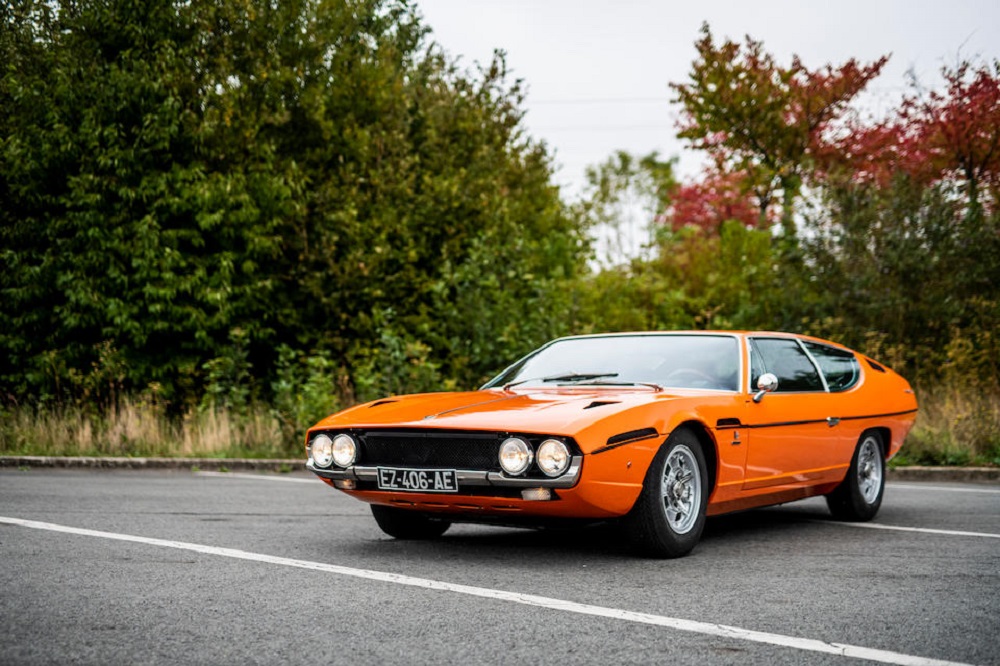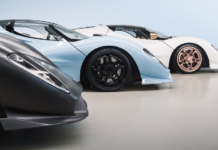“Carrozzeria Bertone unveiled one of its motor show sensations at the 1967 Geneva event, the Marzal. This dramatic concept car was seen as an approach to a four-seat Lamborghini… and it turned out to be a forerunner of the Espada, a genuine four-seater and a distinctive 1960s supercar.” – David Hodges, ‘Lamborghini – The Legend’.

Chassis no. 7063
•French registered from new
•The 20th Espada built
•Matching engine
•Recent high quality restoration
Ferruccio Lamborghini’s first production car, the Touring-styled 350 GT, had debuted at the 1964 Geneva Motor Show. The work of two of Italy’s most illustrious automobile engineers, the 350 GT featured a glorious 3.5-litre, four-cam V12 designed by Giotto Bizzarrini, housed in a chassis penned by Gianpaolo Dallara. The 350 GT’s four camshafts and all-independent suspension meant that it upstaged the best that Ferrari offered at the time; but to compete with his Maranello rival’s larger models Lamborghini needed a nominal four-seater, and the 4.0-litre 400 GT 2+2 duly appeared in 1966. Despite its novice status as an automobile manufacturer, Lamborghini had quickly dispelled any lingering doubts about its ability to compete with the world’s best Gran Turismos.
Named after a matador’s sword and unveiled at the 1968 Geneva Motor Show, the Espada was styled by Bertone’s Marcello Gandini – creator of the incomparable Miura – along lines similar to those of the stillborn, rear-engined, six-cylinder Marzal but carried its 4.0-litre, four-cam V12 up front. The latter – first seen in the 400 GT and used also by the contemporary Islero – produced 325bhp, an output sufficient to propel the distinctive coupé to 150mph. Islero running gear was employed but wedded to a platform-type, semi-monocoque chassis rather than the former’s tubular frame.
Introduced in January 1970, the Series II cars came with an extra 25bhp, 155mph top speed, an improved dashboard layout, and the option of power assisted steering. The dashboard was revised yet again in late 1972 for the Series III, which also incorporated power steering as standard, up-rated brakes, minor suspension improvements, and a restyled front grille. Espada production ceased in 1978 after 1,217 of these imposing cars had been built, of which only 186 were Series I examples. Even today there are few cars that can match the on-road presence of the Espada.
The 20th Espada produced, as indicated by Bertone’s body number, this Series I comes with a certificate, signed by marque specialist Olivier Nameche, confirming that it was sold new in France in December 1968. It was originally finished in Argento (silver) with black interior and was first registered in January 1969. For a long period of time the Lamborghini was owned by an enthusiast from Meurthe-et-Moselle, France before passing into the hands of a prominent Lamborghini collector from Paris, who was searching for a Series I with that model’s distinctive full-width metal in the tail. The Espada was in driveable condition when acquired but nevertheless the owner decided to have the bodywork completely restored by Établissements Martin in Damery, France. The car was completely dismantled and the sills and the wings replaced, while the nicely patinated original interior only required cleaning and reconditioning. Related bills on file total in excess of €40,000. Following this restoration, the Espada was serviced by the respected Lamborghini specialists TS Automobile. The current vendor purchased the Espada at the Rétromobile sale in Paris in February 2018, shortly after its restoration’s completion.
As the 20th car built, and boasting the metal grille at the rear, this beautiful Series I represents the Espada in its earliest and purest form and thus is worthy of a place in any important collection of Lamborghinis.
Report by bonhams.com










